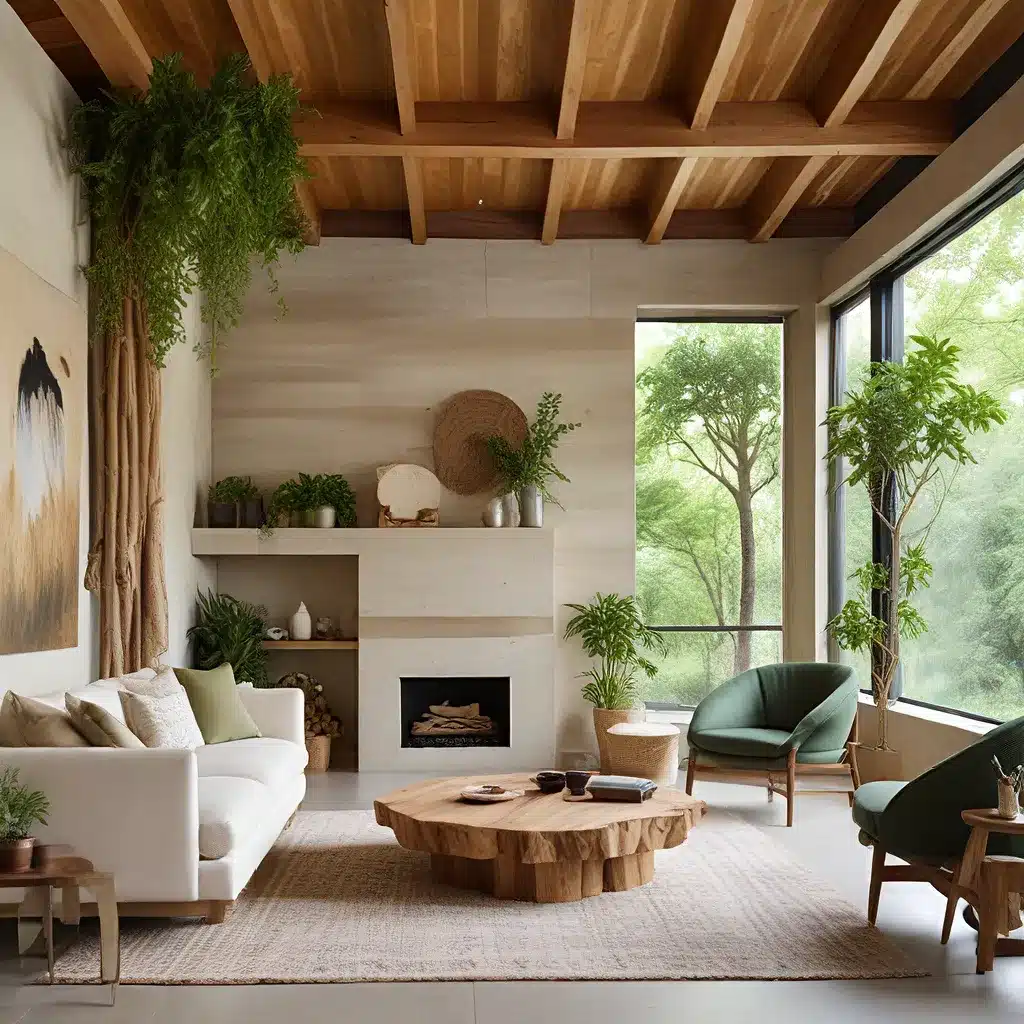
Embracing Slow and Mindful Design
In a world where fast fashion and disposable home goods have become the norm, a growing movement towards sustainable design and slow living is gaining traction among conscious consumers. As the impact of our design choices on the environment becomes increasingly clear, more and more homeowners and designers are seeking ways to create beautiful, long-lasting spaces that are kinder to the planet.
Adopting a slow and mindful approach to interior design is not only better for the environment, but it can also lead to more personalized, functional, and satisfying home environments. By taking the time to thoughtfully consider our design decisions, we can create spaces that truly reflect our individual styles and needs, rather than simply chasing the latest trends.
Prioritizing Quality Over Quantity
One of the key pillars of sustainable design is the emphasis on quality over quantity. Rather than accumulating a myriad of cheap, mass-produced items, the conscious approach encourages investing in well-crafted, durable pieces that will stand the test of time. As the saying goes, “buy less, buy better.”
This mindset not only reduces waste but also leads to a more cohesive and visually appealing home. Professional interior designers often recommend this strategy, as it allows them to curate a space that is both aesthetically pleasing and highly functional.
Embracing Eco-Friendly Materials
Another crucial aspect of sustainable design is the selection of eco-friendly materials. From natural fibers like organic cotton, linen, and bamboo, to recycled or reclaimed materials such as glass, metal, and wood, there is a wealth of sustainable options available for homeowners to explore.
These materials not only have a lower environmental impact but can also add unique textures and visual interest to a space. For example, the warm, earthy tones of bamboo furniture or the rustic charm of reclaimed wood can infuse a room with a sense of warmth and character.
Incorporating Upcycling and Repurposing
In addition to selecting sustainable materials, the conscious design approach encourages the practice of upcycling and repurposing. Rather than discarding old or unwanted items, homeowners and designers are finding creative ways to breathe new life into them.
This could involve transforming a tired piece of furniture with a fresh coat of paint or reupholstering it with organic fabrics. Or it might mean repurposing a vintage suitcase as a unique side table or turning an old window frame into a decorative wall hanging.
By embracing the art of upcycling, homeowners can not only reduce waste but also infuse their spaces with personal touches and one-of-a-kind character.
Incorporating Sustainable Lighting and Appliances
Beyond furniture and decor, the sustainability of a home’s systems and appliances is also an important consideration. Opting for energy-efficient LED lighting and ENERGY STAR-certified appliances can significantly reduce a home’s environmental footprint and lower utility bills in the long run.
These eco-friendly choices not only benefit the planet but can also enhance the overall comfort and functionality of a space. For instance, dimmable LED lighting can create a cozy, inviting ambiance while reducing energy consumption.
Designing for Wellness and Longevity
Sustainable design is not just about the environmental impact; it’s also about creating spaces that promote overall well-being and longevity. By considering factors like indoor air quality, natural lighting, and ergonomic design, homeowners can cultivate living environments that support physical and mental health.
For example, natural materials like wood, stone, and plants can help to purify the air and create a soothing, restorative atmosphere. Thoughtful space planning, with an emphasis on functionality and flow, can also enhance the everyday experience of a home.
Balancing Trends and Timeless Design
While it’s natural to be inspired by the latest design trends, the conscious approach encourages a balance between following trends and embracing timeless design. Trends can provide valuable inspiration, but it’s essential to avoid treating them as rigid rules.
Instead, homeowners should carefully consider which trends align with their personal style and values, and then incorporate them in a way that complements the overall aesthetic of the space. This might mean incorporating trendy accessories or accent pieces that can be easily swapped out, rather than committing to a wholesale redesign.
By focusing on timeless, versatile pieces and allowing personal style to shine through, homeowners can create spaces that feel both contemporary and enduring.
Cultivating a Conscious Mindset
Ultimately, the journey towards sustainable and eco-friendly design is not just about the physical changes made to a home; it’s also about cultivating a mindset of consciousness and intentionality. This means taking the time to thoughtfully consider the impact of our design choices, from the materials we select to the way we organize and maintain our living spaces.
By adopting a slower, more mindful approach to interior design, homeowners can not only reduce their environmental footprint but also foster a greater sense of connection, satisfaction, and well-being within their homes. It’s a holistic approach that benefits both the planet and the occupants of the space.
So, whether you’re embarking on a full-scale renovation or simply looking to make small, sustainable updates to your home, the principles of eco-friendly design can serve as a guiding light, helping you to create a space that is both beautiful and environmentally responsible.

